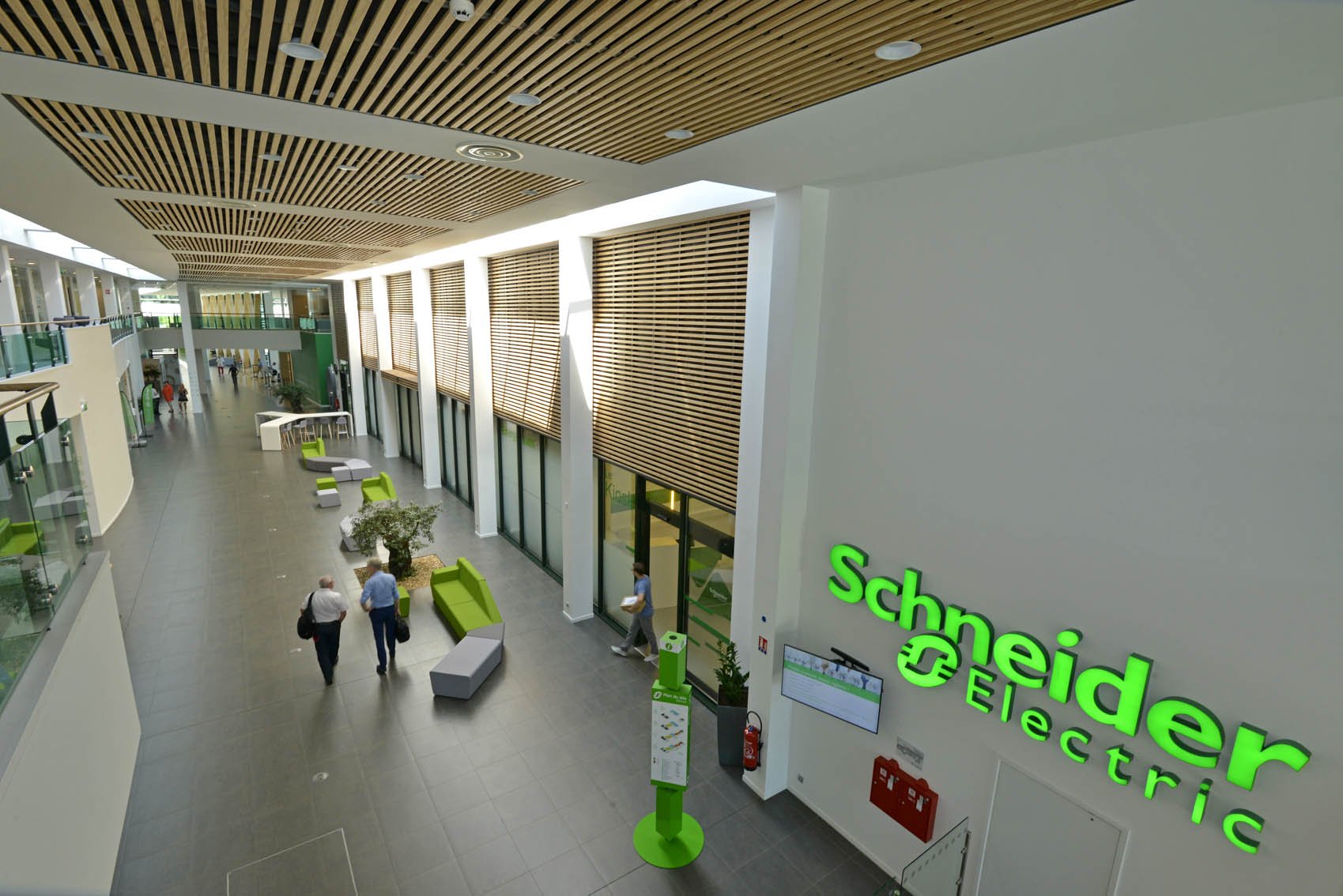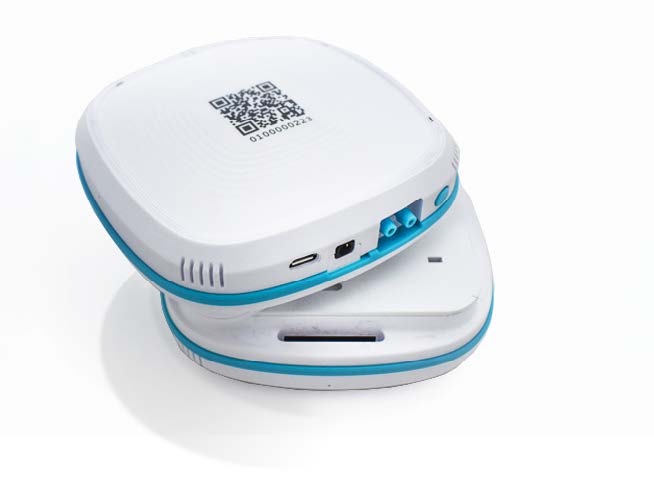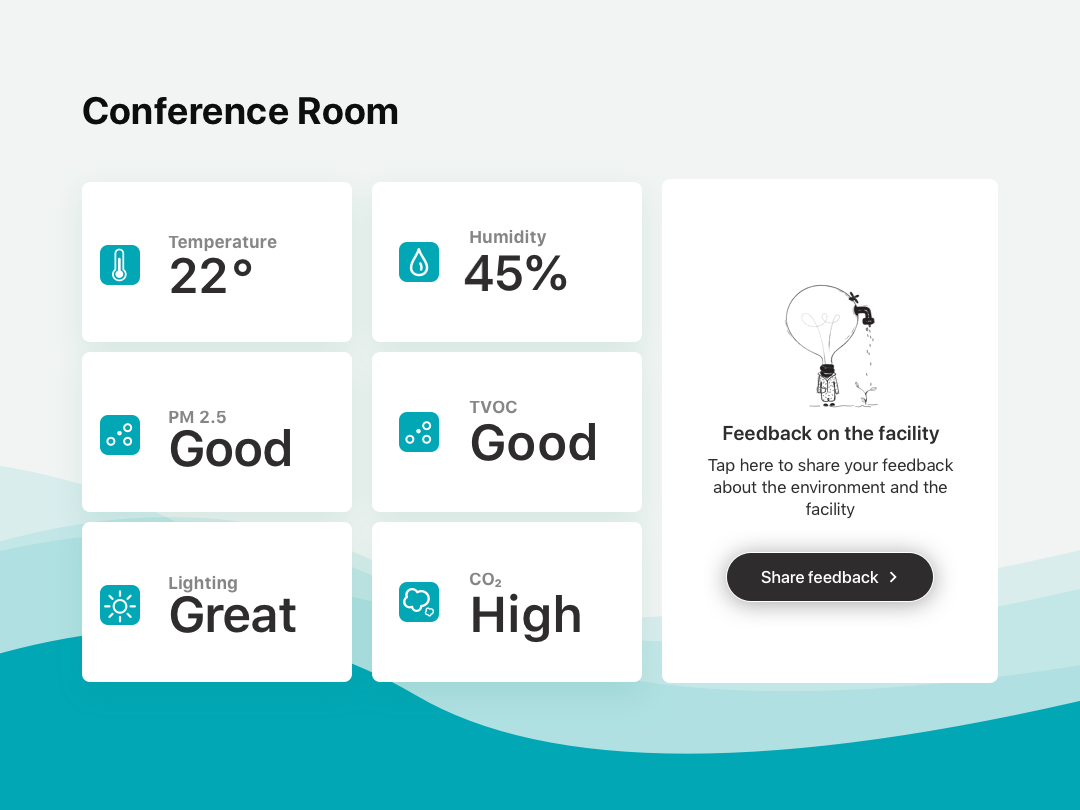Schneider Electric Case Study
Case Study
Monitoring Indoor Air Quality
Project
Schneider Electric

Solution
arbn well

Overview
The Technopole in Grenoble, France is Schneider Electric’s state-of-the-art technology centre – an award-winning, high-performance smart building designed to provide a healthy, high-quality working environment. The 11,000 m2 facility brings together several functions and serves as a testbed and demonstrator for the latest technologies from Schneider Electric. The design and operation of the building reflect Schneider Electric’s commitment to sustainability and human-centric spaces, and allowed the building to be one of the first buildings in France to achieve LEED BD+C v4 Platinum certification. The building has also achieved its energy performance target in operation, using less than 50 kWh/m2/year.
Data-Driven Performance
To design a great space is one thing, but Schneider Electric is committed to proving that the design intent is also carried into continuous operation and maintenance. To this end, Schneider partnered with innovative building performance optimisation company arbnco. With this commitment to data-led management, Schneider use the Arc platform to track and optimise the facility’s performance in line with the requirements of LEED 4.1 O+M.
The partnership integrates arbnco’s distributed sensing capabilities for VOC and CO2 with Schneider’s existing Ecostruxture platform to allow buildings to push data to USGBC’s Arc platform for LEED Certification. The air quality data can be simultaneously accessed via the arbnco platform, for detailed visualisation, reporting, and diagnosis of Indoor Environmental Quality issues; the Schneider Electric Digital Twin platforms, for visualisation and analysis within the context of the rich building data available there; and on Arc Skoru, for LEED (re)-certification and re-entry performance certification. The arbnco system measures VOC, CO2, PM, and other parameters at high temporal and spatial resolution.
“The arbn well sensor network and dashboard have enabled us to measure and maintain high standards of Indoor Air Quality and thermal comfort throughout the building for the health, comfort, and performance of our highly valued workforce. The dashboard and visualisation tools allow us to access and act on the building data holistically, and to drill down to specific locations when required. The integration with the Arc platform has saved us considerable time by eliminating the necessity of collecting data manually”.
Implementation
Scaled floor plans were used by arbnco to design a sensor plan to
meet the data requirements. The data was backhauled to the arbnco cloud-based platform using a 4G gateway, ensuring independence from on-site Wi-Fi or networks. The data was then immediately available to the Technopole management via the arbn well dashboard and the Arc dashboard. The arbnco API is also used to pull the data to Schneider Electric’s Ecostruxture platform.


Over the past year, sensors have been actively measuring conditions throughout the building at a density appropriate for LEED and Arc re-entry requirements. The placement and installation were carried out using the arbnco Best Practice Guide for installation, whose instructions ensure compliance with Arc for LEED™ and Arc Re-entry, as well as the requirements of RESET™ Air and WELL™.
Outcomes
The automated flow of continuous data into Arc enables a streamlined approach to maintaining the high levels of operational performance at the facility. The data makes LEED certification easier and faster by automating compliance for credits in the Indoor Air Quality and Human Experience categories.
Schneider Electric and arbnco have demonstrated the potential of distributed sensing to positively influence building operation through continuous monitoring, data analysis, and operational changes as required.
In addition, there are wider benefits from this data-led approach. For the phased re-occupation of the facility following the COVID-19 lockdown, the policy of measuring air quality (and CO2 as an indicator of ventilation) enables the building management to demonstrate confidence in the workplace as a healthy and attractive environment using outcome-based, best-practice monitoring.
The next phase of the project with arbnco includes enhanced occupant engagement using arbnco’s digital tools, including native iOS and Android apps and kiosks.

